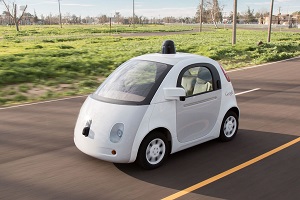
By the year 2030, driverless cars that can think and act like human drivers may be on the roads, according to Kathy Winter, vice president of automated driving solutions for Intel.
“Programmed with artificial intelligence, the [driverless] car could make quicker decisions, resulting in a lower percentage of car crashes,” said Winter.
Over the next three to five years, companies like Intel will move to develop
robotaxis
, which are a type of self-driving car. When eventually robotaxis roll out, they will mostly carry passengers or cargo in certain areas of the United States. Robotaxis will be programmed to drive at the speed limit, unlike humans who tend to drive 10 to 15 miles over the speed limit. These driverless cars will also not dare cross double yellow lines, which is something human drivers do often.
Robotaxis will always follow the laws of the road, which means they will not follow human driver 'customs'. For example one human driver custom is the “California stop”: this is when drivers roll through a stop sign when no traffic is present. And in southwestern Pennsylvania, drivers are accustomed to the “Pittsburgh left", in which an oncoming car turns left when the light turns green.
“There’s an endless list of these cases where we as humans know the context, we know when to break the rules,” said Raj Rajkumiar, professor of computer engineering at Carnegie Mellon University.
Experts say that driverless cars with as much intelligence and decision-making power, as robotaxis will take many more years to develop and perfect. Futhermore, programming robotaxis with human behaviors and eccentricities will require massive and expensive amounts of data and computing power.
Another unique problem self-driving cars face on the roads is aggressive human drivers. Currently, the cars' only solution is automatic emergency braking, which developers suggest should be easy for aggressive drivers to work around. Ultimately, they hope to program robotaxis to drive in harmony alongside human-driven vehicles.
Some predict that by 2030 society can expect an improved version of robotaxis. These new and improved driverless cars will be able to think and act like humans, and they'll hopefully cut down on some of the human error that makes driving so risky.
[Source:
Wisconsin State Journal
]

